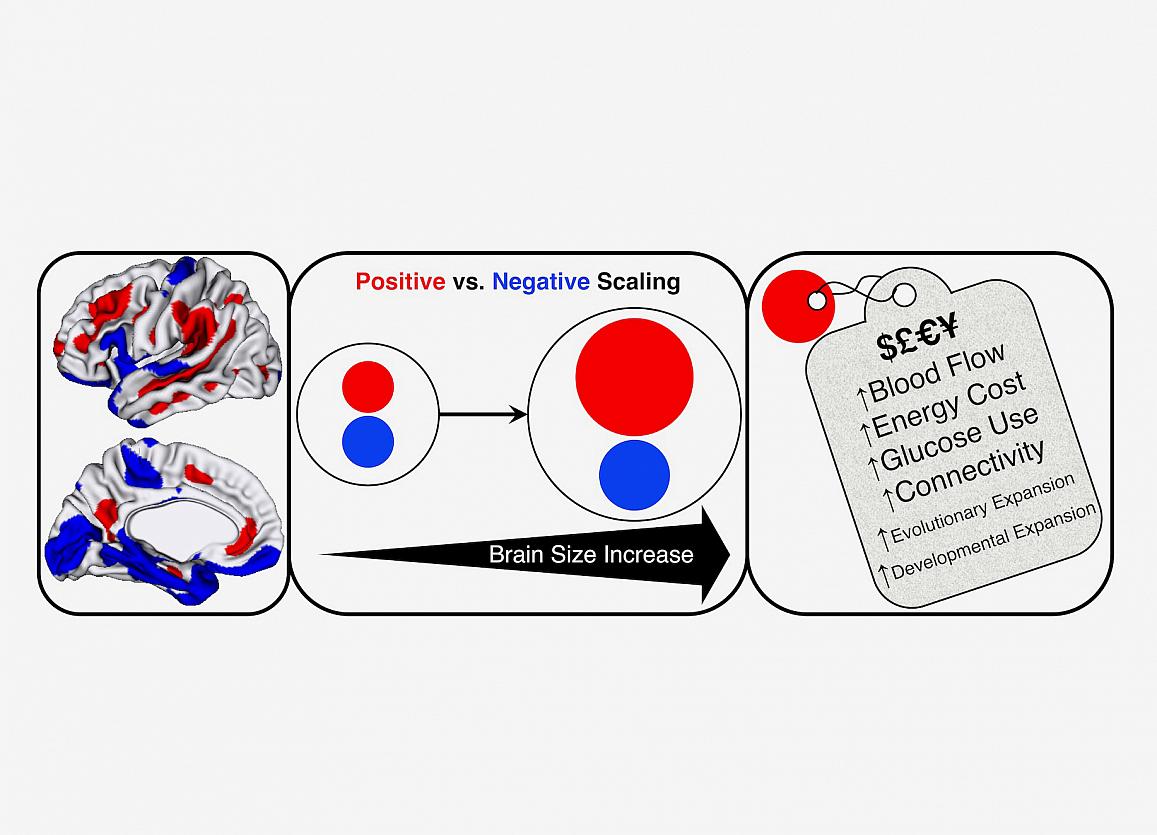Bigger human brain prioritizes thinking hub – at a cost
IRP study finds Information integration trumps emotional, sensory, motor functions
Some human brains are nearly twice the size of others — but how might that matter? Researchers at the National Institute of Mental Health (NIMH) and their NIH grant-funded colleagues have discovered that these differences in size are related to the brain’s shape and the way it is organized. The bigger the brain, the more its additional area is accounted for by growth in thinking areas of the cortex, or outer mantle – at the expense of relatively slower growth in lower order emotional, sensory, and motor areas.
This mirrors the pattern of brain changes seen in evolution and individual development – with higher-order areas showing greatest expansion. The researchers also found evidence linking the high-expanding regions to higher connectivity between neurons and higher energy consumption.
“Just as different parts are required to scale-up a garden shed to the size of a mansion, it seems that big primate brains have to be built to different proportions,” explained Armin Raznahan, M.D., Ph.D., of the NIMH Intramural Research Program (IRP). “An extra investment has to be made in the part that integrates information – but that’s not to say that it’s better to have a bigger brain. Our findings speak more to the different organizational needs of larger vs. smaller brains.”

Larger human brains show relatively more growth in integrative cortex areas (red) than smaller human brains – at a cost of relatively less growth in lower sensory, motor and emotion processing areas.
This page was last updated on Friday, January 21, 2022